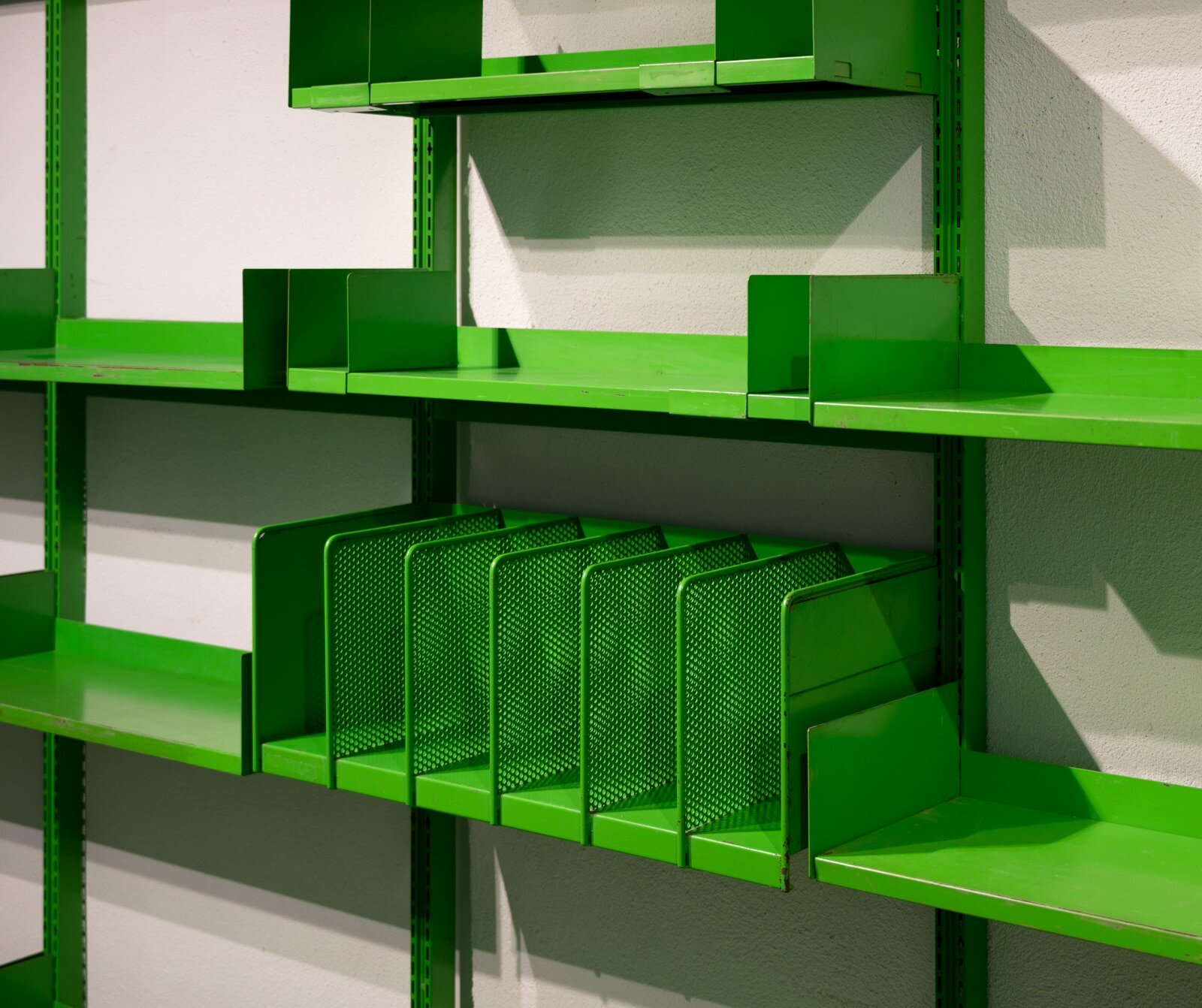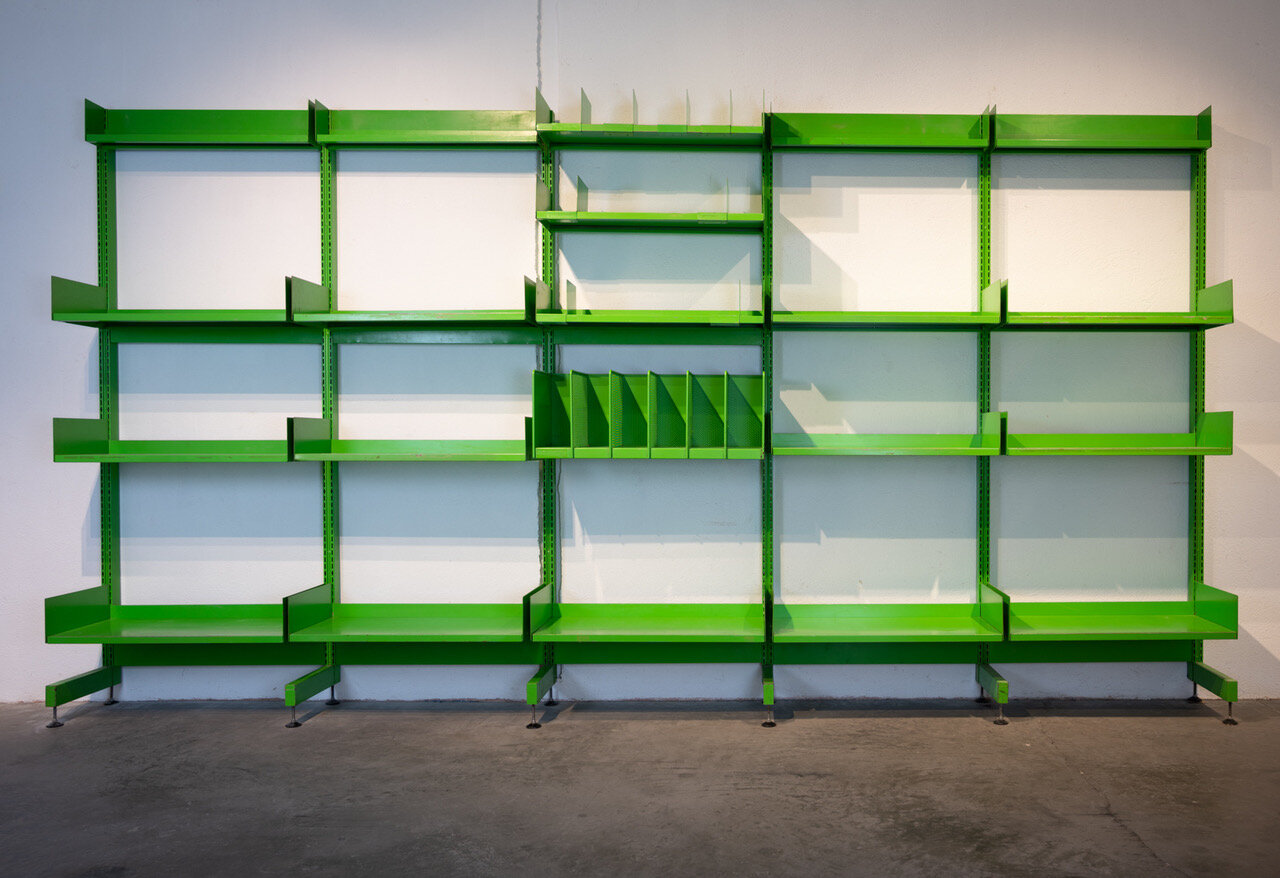3details
An interview with Peter Woodward of 3details and a tour of their inaugural digital exhibition.
3details deal in 20th century design, fine art and decorative antiques, they are a member of both BADA and LAPADA.
What are your highlight pieces from this exhibition?
Highlights include the Gio Ponti maple and glass circular table, the pair of ‘Sedia Jacaré’ folding chairs by Gabriella Crespi (c. 1975), the rattan bar trolley by Raoul Guys and the large shelving unit by Michel Cadestin & Georges Laurent.
This large modular shelving unit is comprised of six uprights and approximately 23 shelves. It is rare to find these shelving units on the market, designed by Michel Cadestin & Georges Laurent. The model was supplied to the library of the George Pompidou (Beaubourg) centre in Paris, circa 1976.
The Georges Pompidou National Centre of Art and Culture opened its doors on January 31, 1977. At the time, a jury chaired by Jean Prouvé chose the architects Renzo Piano and Richard Rogers for the realisation of the whole project. A large part of the furniture was specially designed at Strafor by the designers Michel Cadestin and Georges Laurent, who worked under the direct responsibility of the architect Renzo Piano.
My family lived in Paris in the late 1970s in walking distance of the Beaubourg, I spent a lot of time in the libraries.
Your Beaubourg library shelves are so striking. Did your time spent in 70s Paris shape your eye for art and design? If so, how so?
Yes, I think so, I certainly spent a lot of time in the Beaubourg, though in those days I was mainly interested in music. The audio library in the Beaubourg was a novel concept, way before the iPod or Spotify you could stay there all day listening to music of your own choosing for free! The escalators running up the outside of the building were unique, you just took it all in as you climbed up the side of the structure. I remember being particularly mesmerised by the kinetic sculptures in the fountains outside the building (the early 80s by that time). I knew nothing about the artists who created them, it was just amazing to watch, now of course I realise it was the work of Jean Tinguely and Niki de Saint Phalle, I wish I knew then what I know now! The construction of the building has never ceased to fascinate me, at that time, my family was living in Richard Rogers’ huge loft apartment in the Place des Vosges. The apartment was furnished with Michel Cadestin’s Beaubourg pieces, a group of Warhol Chairman Mao's on the wall, an island kitchen (then unheard of) and a 30 foot long yellow beanbag being pretty much the only furnishings in the large cavernous space that had been created by knocking two floor into one. There was an architects scale model of the Beaubourg in the study which was amazingly detailed, an image of which has stayed with me ever since. To be honest, Paris in the 70s/80s would have have left an impression on anyone, I was very lucky to have had the experience.
Gio Ponti maple and glass circular table
This rare Gio Ponti maple wood and glass circular table was designed for the Hotel Royal Napoli in the 1950s and made by Dassi, Italy in the 1960s. Purchased directly from the Ponti family it is accompanied by a certificate of Authenticity from the Lisa Ponti Archives.
Pair of 'Sedia Jacaré' folding chairs circa 1975 by Gabriella Crespi
A pair of brass and leather 'Sedia Jacaré' Folding Chairs designed by Gabriella Crespi in 1975 named after a type of Caiman that lives in the swamps of central and south America, the articulated shape of the chair is reminiscent of the reptile after which it is named.
Your collection has such variety and yet hangs together as a single aesthetic at the same time. What draws you to pieces?
Its an old adage but I generally try to buy what I like. In my 30+ years of dealing, my tastes have moved through the ages, I was lucky enough to know and work with some of the trades top dealers back in the early 90s, at that time, I learnt about traditional Georgian furniture and rarely thought about much else. It's only in the last five years or so that I really opened my mind to the 20th century, particularly the designers from Italy and France, where I do most of my buying. I don't really have rules or a specific period, I suppose that makes me, for the want of a better word a decorative dealer. The decorative antiques market is generally driven by fashion and originality. Things, styles and periods come and go but the best pieces, that have timeless style or simplicity tend to hang in there and can coexist alongside good pieces from most periods. I truly believe that hedging your bets by mixing things up is the secret to good design and interesting interiors.
Raoul Guys was a Parisian decorator who produced furniture typical of the style of the 50s. The structure of his quality furniture uses bent steel rods covered with a wicker trim . His clean, minimalist style is very similar to that of Mathieu Matégot. It's assumed that Guys worked with Matégot, who exhibited his tapestries in Guys' Galleries. Raoul Guys owned a Parisian boutique called "La Brouette", where he sold his rattan furniture, lighting and metalware.
I see you have a selection of rattan, leather and even cork in the exhibition. Are these more fragile natural materials a focus for you?
Pieces that use fragile materials are always more difficult to find in presentable condition than their sturdier counterparts. For me, spaces work best with a mixture of styles and materials, in my view, natural materials are an essential ingredient in the modern interior.
Lastly: Do you have any advice for new collectors? Any common pitfalls to avoid or strategies to employ?
There are many areas worth paying closer attention to as we start to leave the 20th century behind us. For some time now, buyers seem less interested in whether a piece is a particularly fine example of a known type of antique, rather it’s more about the piece's originality and "the look” these are more important motivating factors to making a sale. There are opportunities to be had in collecting quality examples of late 20th century design from the 80s, 90s and early 00s. Unique pieces including furniture, lighting, objects alongside paintings, printmaking and artist made ceramics - in my view all are good areas to be collecting now.
Take a tour of the full exhibition below:









